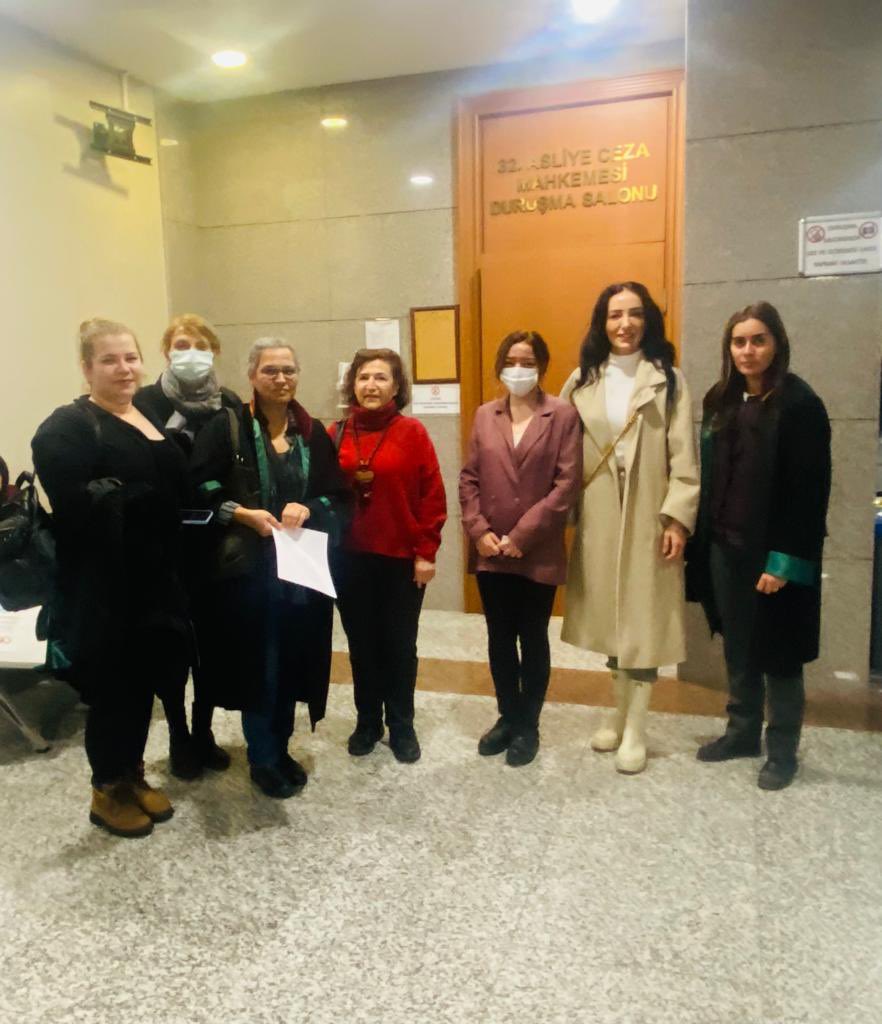How did the cinema industry react after the February 6 earthquakes? What happened to movie theaters in the region? How did the mainstream media and opposition handle the disaster? This edition of the monthly newsletters of Altyazı Fasikul: Free Cinema focuses on the aftermath of the earthquakes in Turkey. The newsletter also gives insights about the lawsuit processes of documentarist Sibel Tekin and editor İlay Arıkan.
Translation by Gökşin Uğur
Despite the censorship: Documentarists in the Field

Following the declaration of a 3-months long state-of-emergency in the 10 cities affected by the earthquakes, there have been numerous cases where many local and foreign journalists were prevented from working through various means by the security forces. For the detailed list of recorded cases, you can refer to the tweet thread by the MLSA (Media and Law Studies Association) and the compilation titled “Censorship in the Earthquake Zone” prepared by the Speak Up Platform. One of the most severe cases in this regard was reported by Anıl Olcan from 1+1 Express. Via his Twitter account, Olcan publicized the attack he was subjected to by a group of locals and security forces while shooting on location in Hatay, and that the police burned his camera batteries, memory card, hard disk, and press card by throwing them into the fire. Olcan also noted that pointing out the risk of lynching the soldiers took him to a safe area after the incident. Upon his return to Istanbul, Olcan conveyed his impressions of Hatay in an article titled “Dehşet Dehşet Dehşet“ (Horror Horror Horror) – available only in Turkish -. Olcan’s impressions from the region also marked the racist activities of paramilitary groups against Syrian refugees, threatening the journalists and documentarists filming in the region.
Many documentarists and video-activists also experienced similar constraints while filming in the region. On February 10, documentary filmmaker Kazım Kızıl announced via Twitter that the police prevented him from filming in Maraş despite presenting his press card. Documentarists faced constraints especially when they interview the earthquake victims on the incompetency of the state in responding to the disaster. A video Kızıl shared from Iskenderun clearly demonstrates that the filming attempts were also being prevented by people who do not hold any authority.
Fatih Pınar edited the footage he took in Adıyaman and Maraş to be broadcasted by +90. The footage that also includes the interviews Pınar held with the earthquake victims demonstrates the tardiness in search-and-rescue efforts and the inability to meet the need for tents in the region. Haydar Taştan, well-known for his short films, shared the photographs he took in Maraş, and Etna Özbek, known for her documentary film Nosema, shared the photographs she took in Adıyaman via their Instagram accounts. Likewise, many other filmmakers and photographers such as Arin İnan Arslan, İmre Azem, Hakan Ketche, Meryem Yavuz, Erhan Arık, and Çınar Koçgiri contributed to the ongoing aid efforts in the region.
Besides, upon Istanbul Photography and Cinema Amateurs Association’s (IFSAK) call, many photographers participated in supporting the units of the Ankara Bar Association that conducts an assessment of the rubble in Adıyaman, Hatay, and Kahramanmaraş.
Industry’s Calls for Solidarity for the Earthquake
In the aftermath of the earthquake, there have also been calls for solidarity by the film and television industry and funds were raised for various donation campaigns for the earthquake-stricken region. Cinema and Television Union published a statement in February urging all its members to provide their support via the unions, associations, and/or initiatives they are affiliated with. The union also announced that a Coordination Committee established by the participation of various stakeholders, collectives, associations, and foundations from the industry will be responsible for carrying out the facilitation of the aid to the earthquake zone. Following the call for solidarity, while some production companies such as Ay Yapım, OGM Pictures, Medyapım, Gold Film, and TIMS&B Productions provided equipment including but not limited to trailers, lighting equipment, and generators to the zone, many workers of the industry went to Hatay and Adıyaman to assist search and rescue operations.
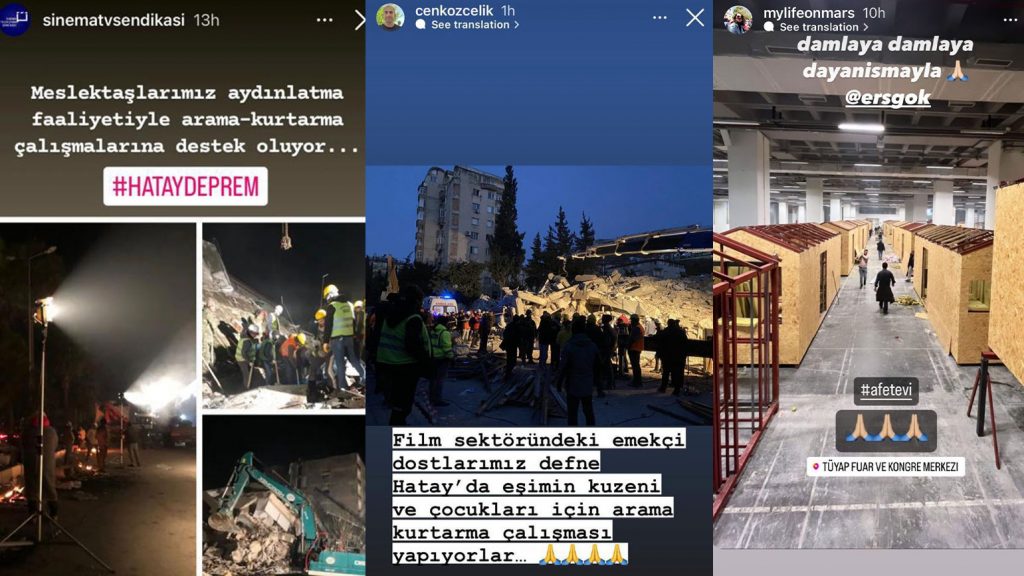
Netflix announced that it donated 6 million Turkish Liras to the earthquake zone, while MUBI Türkiye announced that it is going to donate all of its annual income so far to the earthquake victims. MUBI Türkiye’s donation of 1 million Turkish Liras to the Ahbap Association was also listed among the corporate donations disclosed by Haluk Levent, the founder of the association.
The volunteers of SenaristBir (Screenwriter and Dialogue Writer Work Owners Association) announced in a social media post posted from Davuthan village in Adıyaman that they delivered the donations by their members to the earthquake zone. Meanwhile, at the Istanbul TÜYAP fair center, the production of tiny houses and durable nurseries for earthquake victims has been initiated via the efforts organized by cinematographer Ersin Gök.
Amid Search and Rescue: The debate on halting productions
Following the call of the Cinema and Television Union on February 7 for channeling the equipment and trailers used for film production to the earthquake zone to be utilized for search and rescue missions, Sine-Sen also published an open call urging for a halt in the operations in the movie sets. Though Tesiyap, a television and film producers association, announced that most of the productions “paused their operations for a while”, it was also known that many productions did continue their operations. According to the information provided by an independent tabloid journalist Birsen Altuntaş via her self-owned platform, Tesiyap chairperson, Timur Savcı, expressed that all the productions under Tesiyap are paused at least for three days and after that “every company should make their own decision” whether to continue their operations.
In their open call dated February 9, Sine-Sen stated: “Do not set up any movie sets and halt all the shootings till the last one of our fellow citizens is rescued from the rubble. Send all the trailers and the lighting equipment to the earthquake-stricken zone”. While this call gave rise to some criticism as it disregards the remuneration for film industry workers, numerous social media posts regarding lighting and sound teams assisting the search and rescue efforts in the zone received considerable attention.
A day after Sine-Sen’s call, on February 10, Cinema and Television Union also advised producers to pause movie set operations till February 14. On the same day, in another statement, SenaristBir pointed out that despite the halts in the production, scriptwriters still continue to work, and “it is unacceptable that they are expected to work during these days of grief.”
Sine-Sen’s call on halting productions had also some repercussions in the media. As Birsen Altuntaş reported, actor Oktay Kaynarca protested the call with these words: “Calling for a halt in productions is simply underestimating the work we undertake… That’s why I disapprove the union’s attitude. Do the banks or factories come to a halt?”
Though there is no reliable source on to what extent these calls found correspondence in the industry, producer collectives such as SEYAP (Cinematographic Work Producers Association) and Tesiyap do engage in the aid projects for earthquake victims organized by the Coordination Committee founded by the collective initiative of the key actors in the industry. The first course of action of the Committee was creating the form titled “Determining the Effects of Earthquake in the Film Industry and Disaster Preparedness” which is particularly meant for the workers of the film-television industry in an attempt to gather data for the prospective actions. For example, designating the workers of the film industry available for participating in the search-and-rescue and aid efforts beforehand could keenly contribute to the better organization of the industry in the potential upcoming earthquakes/disasters.
State of the cinemas after the quake
With the earthquakes directly affecting 11 cities in Turkey, many movie theaters in these cities became dysfunctional. Starting from the 2000s, many detached theaters in these cities had been closed with the opening of numerous shopping malls. We reached out to Kemal Ural from Bir Film to seek his opinion on the issue, and he confirmed that in the region there were no movie theaters outside of the shopping malls, except for the Cinema Orient in Samandağ, Hatay. On social media, there were posts indicating that Samandağ Cinema Orient, which was not destroyed in the earthquakes, has become one of the areas where earthquake victims gather to await help.


On the other hand, the City Cinema at the Diyarbakır Diyar Galeria already shut down three years ago. The former manager of the Cinema Dilan, Abdülkadir Aydın, who had entered the theater for his first time as a soda-seller, became the manager of the City Cinema upon the closure of the Cinema Dilan. According to the article by Vecdi Erbay published in Gazete Duvar in 2018, despite the scarcity of audience, Aydın continued the operations of the City Cinema until the Covid pandemic. The City Cinema, which then endeavored to survive for a little longer with the “Domestic Film Screening Support” of the Ministry of Culture Türkiye, halted its operations after a while.
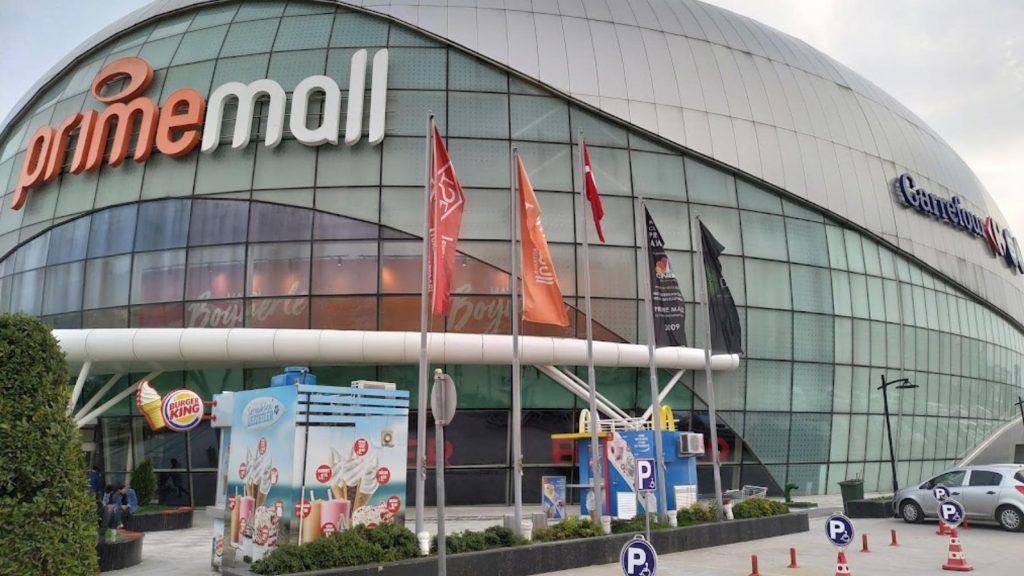
To the best of Kemal Ural’s knowledge, no movie theaters located in the shopping malls were destroyed during the earthquakes. Yet, due to the extensive casualties caused by the quakes, it is anticipated that it will take a long time for the movie theaters of the Prestige Group, which are located in the Primemall shopping malls, to reopen their operations. According to the information provided by the Primemall Group, it is envisioned that the movie theater in Antakya will reopen its doors in a year, the movie theater in Iskederun in 6 months, and the movie theater in Gaziantep in a month.
The firm that demolished the Emek Movie Theater is the one that built the Diyar Galeria
The Diyar Galeria residential complex in Dağkapı, Diyarbakır was among the structures destroyed in the February 6 earthquakes. The complex was composed of four buildings, one of which was completely demolished by the earthquake while the others got seriously damaged. According to unconfirmed figures, 89 people passed away at Galeria. Opened in 1999, Diyar Galeria was known as the first gigantic mall in Diyarbakır.
At the time of preparation of this article, the demolition of the damaged buildings of the Galeria complex was still ongoing. And thanks to the strong voice raised by the animal rights defenders, the demolition was halted and the rescue operation for the cats trapped in the damaged buildings was started.
According to the news report by Cumhuriyet newspaper [available only in Turkish], one of the main factors that led to the collapse of the complex has been the faults in the construction such as the use of improper material and the issue of groundwater. Serhan Özdemir, a lawyer from the Diyarbakır Bar Association, who had a dispute to be settled before the court with the grocery store located at the ground level of the building for cutting the columns, is also among the ones who died under the Galeria rubble (See the news report by Özgür Cebe from Sözcü newspaper – available only in Turkish).
It was reported that architect Şeref Kesgün, the project manager of the Galeria complex, was taken under custody on February 15 along with the owner of the complex, Hasibe Yıldırım, and the civil engineer Mustafa Cevat Arsız within the scope of the investigation initiated by the Diyarbakır Chief Public Prosecutor’s Office. Later, they were released upon interrogation. As recalled by the Bianet press agency, the Grand Pera, the mall that was the reason behind the demolition of Emek Movie Theater, was also built by Kamer Constructions, a construction company associated with the Kesgün family.

Another member of the same family, Fatih Kesgün, has also played a significant role in the demolition of Emek Movie Theater. Fatih Kesgün, who works at the construction company Mim Yapı along with Şeref Kesgün, was the project coordinator of the mall of Grand Pera. It is known that Kesgün had previously misled the public by claiming that “Emek Movie Theater will not be demolished” and “no malls will be built in replacement”.
In 2010, a meeting took place on the subject of the construction of a structure, later called as Grand Pera, in IKSV’s Şişhane office. During his speech at this meeting, Fatih Kesgün was booed by the arts and culture circles as he claimed no malls will be constructed on Emek Movie Theater premises. One of the keynote speakers at the meeting, Mücella Yapıcı, an architect and activist who is sentenced to 18 years in prison in the Gezi case on April 25, 2022, revealed Kesgün’s lies as she stated: “This is a project that envisions demolition.” In the aftermath of the meeting, Kesgün’s claim of Emek Movie Theater being “moved without demolition”, which distorts the reality, was utilized by the government of Justice and Development Party (AKP) to suppress the protests against the project from 2010 till its demolition in 2013. After the surfacing of Kesgün’s role in the construction of the Galeria complex, Emek Bizim İstanbul Bizim (Emek is ours, Istanbul is ours) initiative reminded the public about Kesgün’s role in the demolition of Emek Movie Theater via a post on social media.
Galeria was Diyarbakır’s arts center
Back in the day, Diyar Galeria was home to the Cinema Europe (Avrupa Sineması), the City Cinema (Şehir Sineması) and Yenişehir Galeria Cinema within its premises. Diyarbakır Arts Center (DSM), a branch of Anadolu Kültür, was also founded there in 2002, and many events like the Diyarbakır Literature Days, Diyarbakır Women’s Film Week, Documentary Film Days, and Istanbul Biennial met the audience at DSM’s venue in Galeria. Cinema Europe was founded as an initiative of DSM in 2004, and as it became the center of cultural events in the city, it parted and established as a private initiative in 2008. Up until the late 2010s, Cinema Europe kept hosting many festivals like Filmekimi and Diyarbakır Film Days. Founded in 2003, Diyarbakır Cinema Club also hosted many screenings at DSM’s venue in Galeria and Cinema Europe for years. Until the February 6 earthquakes, the initiative was still carrying out its activities such as film screenings and discussion sessions at the venue in the downstairs hall of Bezginbekir Cafe.
As mentioned above, one of the historical cinemas of Istanbul, Emek Movie Theater, was demolished in May 2013 because of the Grand Pera Mall project undertaken by the Kamer Constructions, a company that is also responsible for the construction of Diyar Galeria. Following Emek’s demolition, as the news on the urban development plans envisioning a construction of a shopping mall in the guise of a historical structure in Gezi Park found wider coverage in the media, widespread protests took place all over Turkey. Producer Çiğdem Mater, who was sentenced to 18 years in prison in April 2022 at the Gezi Park Trial that was brought before the court in an attempt to criminalize the aforementioned protests, wrote an article in the prison. In the article, as Mater conveys the first moments she faced the earthquake news, she accounts for Cinema Europe in Diyarbakır with the following words:
“Diyarbakır appears on the screen… and the rubble of Diyar Galeria. Diyar Galeria that was the home to the Diyarbakır Arts Center founded by Anadolu Kültür in 2002 and the Cinema Europe… Diyarbakır Arts Center that was founded by the tireless efforts of Osman Kavala, Mine, Ahmet, Elif, and Melike…”
For more information on the history of the cinemas at Diyar Galeria, you can refer to the article “Diyarbakır’ın Seyir Tarihi” [available only in Turkish] by Övgü Gökçe on our website.
A Filmmaker and an Architect: On Earthquake in Prison
Film producer Çiğdem Mater, who has been behind bars for 10 months as of the time of this article, interviewed Mücella Yapıcı after the February 6 earthquakes. Both Mater and Yapıcı were sentenced to 18 years in prison in the Gezi Trial on April 25, 2022, and they both reside in Bakırköy Women’s Prison. In the indictment of the mentioned case, the statements of Mücella Yapıcı such as “Gezi Park, the only park area in the city center available for taking shelter in the face of an earthquake was tried to be sacrificed for the sake of concreting over” and “we did not forget the earthquake and will not let it be forgotten…” provided as evidence for the charge of “attempting to overthrow the government”.
In the aforementioned interview published in Bianet, Mücella Yapıcı stressed the importance of the Gezi Park as an emergency assembly area with the following words:

“Who was it that opened all the earthquake gathering zones to development, and insisted ‘I must construct buildings here’ – despite all the scientific, technical and legal rulings against it – on the only site in the middle of Istanbul – Gezi Park – that can be used to erect a field hospital, a tent area or a helicopter pad? Who was it that committed violence against those who tried to stop that, who murdered 8 of us and injured thousands? They are all listed in the ‘complainants’ section of our case file.”
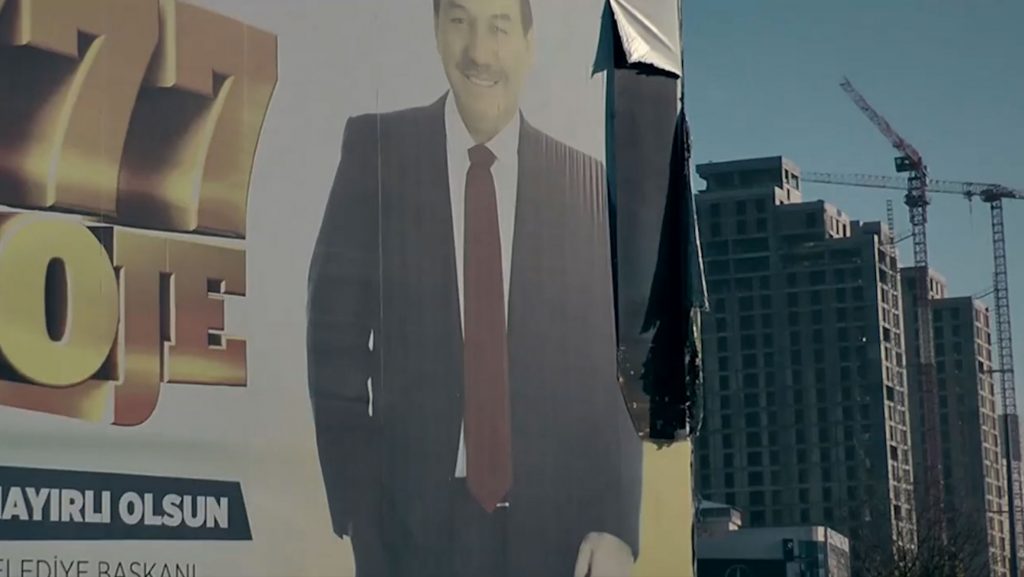
Reactions to the ‘Charity Washing’ and the Counter-Videos
On February 15, a fundraising campaign called “Türkiye United as One” [Türkiye Tek Yürek] broadcasted on over 200 television channels in Turkey for 7 hours with the participation of celebrities. The participation of actors, filmmakers, and artists in the broadcast raised a few eyebrows on social media. Especially certain facts such that 86 billion Turkish liras of the overall donations (115 billion Turkish liras) collected in the campaign was raised out of the state resources, and that Cengiz Holding, which donated 3 billion Turkish liras to the campaign, was given an incentive of 3 billion Turkish liras by a presidential decree, strengthened the criticism that the artists have become a tool for the self-laundering show of the business and for the election campaign of the AKP-MHP government. As a criticism, the Umut-Sen collective shared a video-remix that brings together footage from the Turkiye United as One fundraising campaign and sound recordings of the earthquake victims and solidarity initiatives from the field. Through the video, the policy of covering up the weakness of the state and the urgent need for tents in the region, which has still been ongoing even in the second week of the earthquake, with broadcasts such as the government’s donation campaign were criticized.
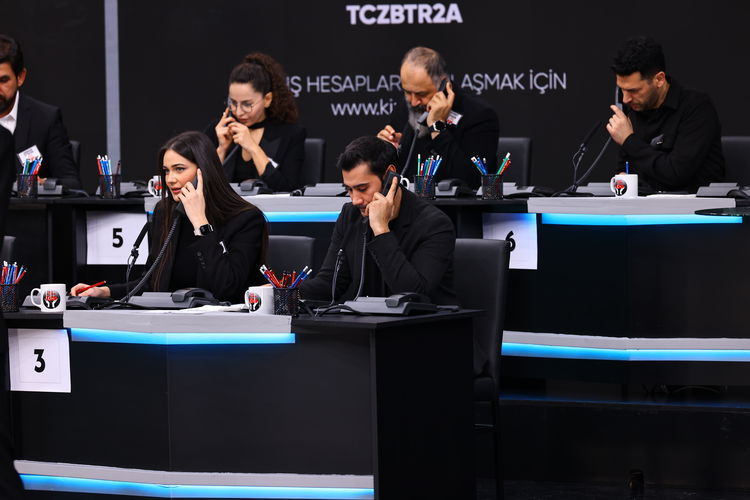
Kutsal Motor was also among the platforms that shifted the content of its broadcast after the earthquake. Referring to Erdoğan’s threat against the public of ‘logging everything to his black book to be opened when the time comes’ on the second day of the earthquakes, Kutsal Motor started a video series titled “Notebook”. Notebook #1 focuses on the vital first 24 hours following the earthquake and records the negligence and inadequacies of the state institutions on the day.
Survivor (a reality show that is broadcasted on the television channel owned by Acun Ilıcalı who was also one of the hosts of the Türkiye United as One campaign) broadcasting the moment the contestants were informed about the earthquake was also marked as a “grieve porn” by some social media users. The way mainstream television channels have been broadcasting the rescue moments with added music in the background as epic moments also caused a debate on social media regarding the usage of footage from earthquakes. Those who lost their relatives in the quake also criticized this: “Take all these miracle videos with background music of yours and shove it!”
Cinemas of Hope

Cinema of Hope that set up in the tent city nearby the Diyarbakır Kumrucuk Elementary School.
First signs of daily life started to appear in the tent cities following the disaster. One of the first images of these signs came from Maraş and Diyarbakır with the visuals presenting children at cinema. The photographs showing the movie screenings for the children at the tent cities in these cities became one of the symbols of hope. The photograph of the scene taken by Kazım Kızıl in Maraş got considerable interaction in social media. Kızıl shared the photograph with the caption: “A group of young artists from Istanbul not only prepares meals for hundreds of people but also organizes activities for children throughout the day. The photo is from the movie screening with hot chocolate and popcorn.” Another similar photograph was shared from Diyarbakır. Hasan Kartal, a teacher from Diyarbakır Kumrucuk Elementary School, shared a photograph showing children at the cinema with the caption: “‘Cinema of Hope’ in the tent city of Sur Kurşunlu”.

International Solidarity: Not Sufficient
A substantial amount of financial support was raised for donation following the earthquakes that caused serious casualties and damage both in Turkey and Syria. Yet, there are also some signs indicating that the international arts and culture circles are far from grasping the extent of the wounds inflicted by earthquakes in Turkey and Syria. For example, while the struggles in Ukraine and Iran were mentioned at the opening ceremony of the 73rd Berlin Film Festival that brought together the international cinema community, the fact that the situation in Turkey and Syria was overlooked at the event drew some criticism. In an article published in Variety on the subject, it is mentioned that the Berlinale administration drew attention to the issue by calling for donations to Doctors Without Borders. However, the same article also includes the views of Ahmet Boyacıoğlu and Başak Emre, the directors of the Golden Orange Film Festival, regarding how Europe ignores Turkey in this regard.
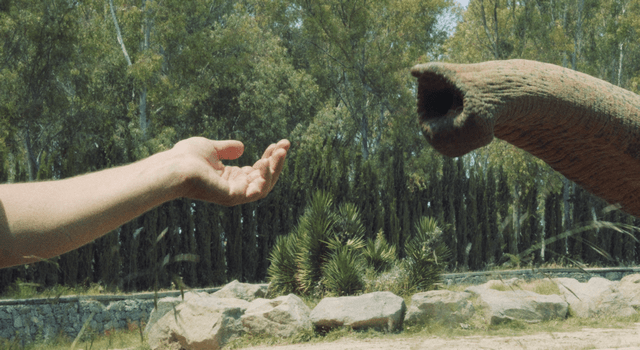
At this year’s Berlinale, those who drew attention to the tragedy of the earthquakes were once again the filmmakers from Turkey and Syria. Right before the screening of Burak Çevik’s film Forms of Forgetting (2023), which premiered in the Forum section of the festival, the film crew reminded the audience of the February 6 earthquakes and drew attention to the unlawfulness inflicted on film producer Çiğdem Mater and the other Gezi prisoners in Turkey. At an event in the European Film Market (EFM), producer Armağan Lale also stressed the importance of mobilizing the international cinema community to support the earthquake victims. In the meantime, Berlinale’s Forum and Forum Expanded programmes called for donation campaigns with the suggestion of Müge Turan and Can Sungu, contributors to the festival program.
On the other hand, there have been statements made by the diasporas comprehending the reality of the earthquakes and stressing the importance of regional solidarity. In a statement expressing their solidarity with the people of Turkey, Syria, and Iran, the Association of Iranian Film and Theatre Artists Abroad (AIFTAA) expressed that the “natural disasters such as earthquakes have no borders”. As one may recall, on January 28, a 6.1 magnitude earthquake had struck the city of Khoy in western Iran which also affected the cities in Turkey such as Van. A group of artists and arts and culture workers from Turkey and the United Kingdom, including Pelin Başaran, the co-founder of Siyah Bant – a research initiative dedicated to documenting censorship in arts and artistic expression, the renowned theater director Mehmet Ergen, and the actor Memet Ali Alabora, who has been living abroad due to the unlawfulnesses he was subjected to in the Gezi Case, announced that they formed an initiative called Sounds of Solidarity to “seek to raise vital funds for long-term relief amongst those who have been impacted by the earthquake” and “to ensure that [the] contributions make a direct impact.” In the Netherlands, a group of artists and cultural workers established an initiative called Artists in Solidarity. Another initiative that is established in Germany by Mitos Film and medico internationale called Help Without Borders also sought to expand the fundraising for Turkey and Syria with a statement undersigned by international filmmakers. There are many other abroad collectives/initiatives formed by artists and cultural workers like these seeking to raise awareness and donations for the earthquake region.
After the Disaster? The Dilemma of the Arts and Culture Industry
The disastrous earthquakes also deeply affected the arts and culture industry. Many events that were planned to take place in February, including İFSAK 29th Short Film Festival, are postponed for an unspecified period. Some organizations have started to contribute to aid activities for earthquake victims and donate the income from their activities to charities. All sorts of media outlets reshaped their broadcasting policy around the agenda of the disaster. While many arts and culture broadcast organizations paused their broadcasting, some of them shifted their focus to the flow of information about the disaster. In which manner the disaster will find a place in the public debate is already a topic of interest.
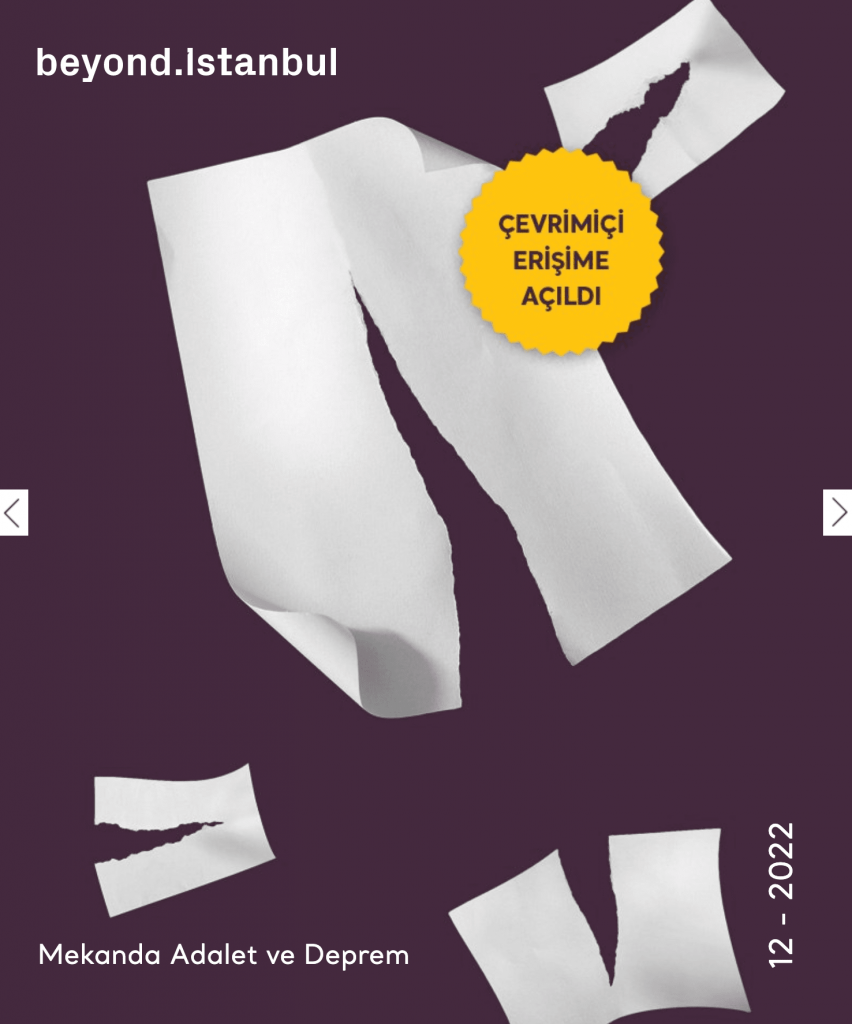
Still, the arts and culture industry also has some hesitations on how to engage in the face of the disaster. Because, while life has stopped to a large extent since February 6, the questions of how daily life will be maintained and whether it can continue as before keep many areas in uncertainty. Though movie theaters keep up with their operations, there is a strict decline in the number of audiences. According to the figures provided by Box Office Turkey, there was an 85 percent decrease in the number of audiences in the week of the earthquake, February 6-9, compared to the week before. As of the end of February, when exactly the festivals, concerts, and theater plays will take up remains to be seen. The attempts to demonstrate the will to carry on with daily routines by some organizations sparked up discussions on “recovery”. Oksijen newspaper’s initiative that brought together numerous authors to write literary captions for photographs taken from the disaster sites and SineBU’s announcement on their return to screenings with the transformative force of cinema got serious backlash on social media. Upon the negative reactions, some of the authors involved in Oksijen’s project expressed their regret and SineBU deleted its announcement.
Sibel Tekin Trial: “The life that begins in the dark also affects me”

On February 23, the first hearing of the case against the documentarist/video-activist Sibel Tekin on the charges of “membership in a terrorist organization” was held at Ankara 26th High Criminal Court. The ‘terrorist organization’ mentioned in the charge remains unspecified. The hearing was attended and monitored by numerous documentarist friends of Tekin, as well as Disk Basın-İş, the Association of Documentary Filmmakers in Turkey (BSB), the Association of Contemporary Journalists (ÇGD), Human Rights Association (İHD), Media and Law Studies Association (MLSA), Education and Science Workers’ Union No.5, Ankara Women’s Platform, the representatives of Flying Broom, and Peoples’ Democratic Party (HDP) MP Erol Katırcıoğlu. At the hearing, the court decided an expert report to be prepared and any other material of Tekin’s that is not related to the expert report to be returned to Tekin, the continuation of the international travel ban imposed upon her, and the revocation of the judicial control measures on her.
Tekin is facing trial for filming on December 15, 2022, during the early hours of the morning in Tuzluçayır, Ankara for her documentary film Karanlıkta Başlayan Hayat (“Life that Begins in the Dark”), a film on the permanent summertime regulation in Turkey. In the indictment, Tekin is accused of “reconnaissance with the order of a terrorist organization” based on the claim that footage shot by Tekin allegedly shows a police checkpoint on the road and a shuttle with the correction officers in it.
According to the Media and Law Studies Association’s (MLSA) notes from the hearing (available only in Turkish), in her defense statement, Tekin said: “The life that begins in the dark also affects me, just like many others… Not to capture any faces, I only shot people’s backs. I shot the illuminated school buildings.” To the question of the judge “while shooting the footage, did you film any uniformed officers?”, Tekin replied: “No, I didn’t film any uniformed officer. As it was dark, I did not see any uniforms. If I did perceive any uniformed officers, I wouldn’t film them. I was trying to shoot the regular people commuting to work. I didn’t even realize what I was charged with till I was brought to physical examination at TEM.”
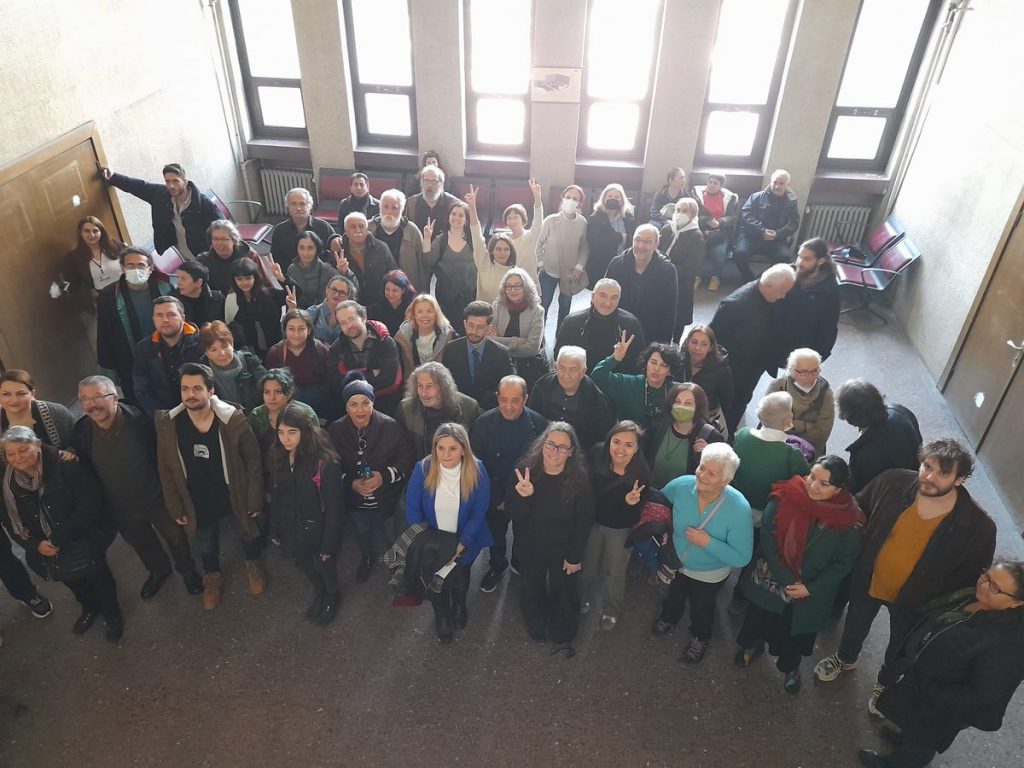
The prosecutor, who asked Tekin whether she had any kind of written permission for filming, to which Tekin replied “I am not required to get one as I am an international press card holder”, also rendered the footage in Tekin’s hard disk an object of interrogation. Later the prosecutor also asked Tekin: “Investigation of the confiscated digital material shows footage from the mass demonstrations organized by organizations such as THKP-C and TİKKO. How do you obtain information about these demonstrations?”, to which Tekin replied: “I film the demonstrations that are publicly announced. I did not film the aforementioned protests, I filmed the demonstrations that took place on the streets of Ankara.” Tekin’s lawyer, Cenk Yiğiter, added: “Unless marked as military zone, any public space can be filmed without requiring any permission.”
Tekin’s response to the prosecutor’s question “Fethullah Terror Organization (FETO) and Hizbullah also organize protests in Ankara. Why those were not included?” was ironically revealing how documentary filmmaking has been criminalized in Turkey:
“On the contrary, I shot many footages like those. I filmed the protest of the conservative groups in front of the Embassy of Egypt, I also filmed the protests of the football fans. During the digital investigation certain footage was extracted from the collection, selectively showing only the protests that are tried to be criminalized.”
Even technical issues related to filmmaking, such as what kind of camera Tekin was shooting with, are turned into criminal charges in the case. In the indictment, the fact that Tekin was shooting early in the morning was assessed as being “unconventional”. It is also inexplicable why the prosecutor, who also claims that Tekin was involved in “reconnaissance”, would comment on the technical quality of the footage (referring to its darkness). In this regard, Tekin’s lawyer Yiğiter stated:
“The prosecutor claims that there is an attempted ‘reconnaissance’, on the other hand, they claim ‘the buildings, vehicles, and people are not clear in the footage.’ It is quite apparent that the camera used by Tekin is not appropriate for reconnaissance activities. In the meantime, her confiscated mobile phone has a much better camera capacity. If Sibel wanted to make higher quality shootings, she would have used the phone’s camera instead.”
The next hearing of the trial will take place on June 8, 2023, at the Ankara 26th High Criminal Court, which is ironically the same court that hears the case on the October 10 Massacre that was a significant part of Sibel Tekin’s documentary titled Tell Me, Where Will Death Fall (2019).
İlay Arıkan vs. Mertkan Bozkurt: The prosecutor demands punishment for sexual assault
The verdict is approaching in the case where film editor İlay Arıkan is the complainant. At the hearing held at the 32nd Criminal Court of First Instance on February 21, the prosecutor demanded that the defendant Mertkan Bozkurt be sentenced for sexual assault, sexual harassment, insult, and threat. Hülya Gülbahar, who served as Arıkan’s lawyer at the hearing, requested that the defendant be sentenced without any reduction. Defendant Bozkurt’s lawyer requested a continuance for the defense.
The verdict on the case is expected to be delivered at the next hearing to be held on March 17, 2023, at 10:30. The interview we had with Hülya Gülbahar after the third hearing of the trial is available here (in Turkish).
